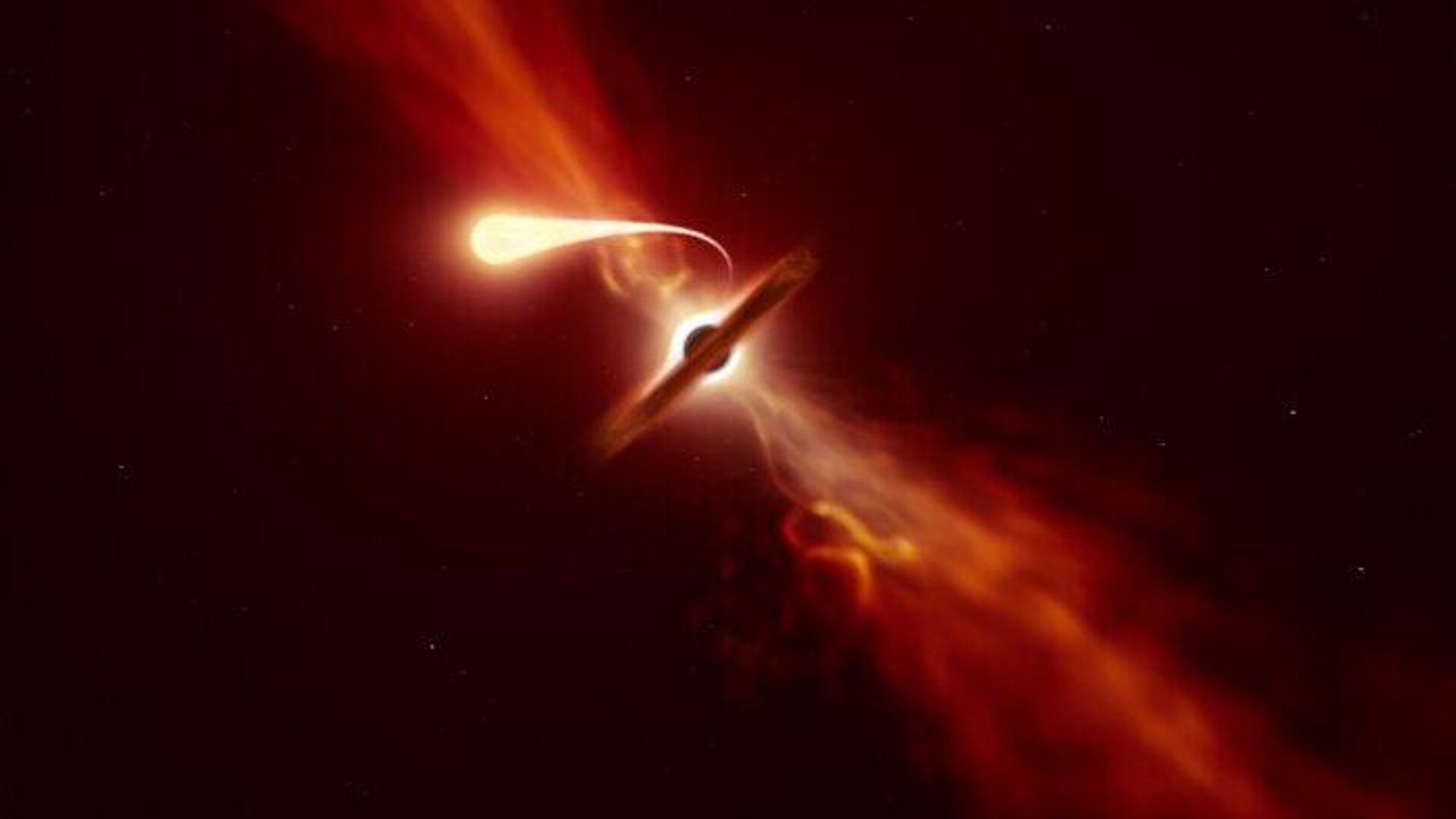Black Hole’s ‘Particle Accelerator’ Propels Earth’s High-Speed Cosmic Rays
This illustration depicts a star (in the foreground) experiencing spaghettification as it’s sucked in by a supermassive black hole (in the background) during a ‘tidal disruption event’. In a new study, done with the help of ESO’s Very Large Telescope and ESO’s New Technology Telescope, a team of astronomers found that when a black hole devours a star, it can launch a powerful blast of material outwards.
Chimauchem Nwosu Cosmic rays have constantly threatened the Earth with deadly radiation, but the atmosphere reduces their effect; otherwise, all life forms would have long ago been extinct. But one fact remains mysterious about these beams — the speed of their movement.Looking into Black holes reveals that there are natural ‘particle accelerators’ inside them responsible for beaming cosmic radiation towards our planet at break-neck speed.These extra-terrestrial beams originate from distant sources like quasars and supernovae, but appear as a blurry blob on instruments. The distance of quasars, which generate high-energy cosmic rays, makes thorough observations of the deep-space radiation impossible. Closer supernovae emit feeble, low-energy rays.
Quasars are very bright cosmic cores where gas and dust drop into a supermassive black hole, emitting electromagnetic radiation across the whole spectrum. A quasar is one of the brightest kinds of matter in space. It typically emits a thousand times more light than the whole Milky Way galaxy.
Researchers from an international scientific team have studied a particular black hole called the SS 433, ten times the sun’s mass, that yielded profound insights about cosmic objects. According to their research, published in the peer journal Science, it is in the Manatee Nebula, some 18,000 light years from Earth. SS 433 is strong enough to emit higher-energy particles than supernovae but is very fragile when close.”It’s called a microquasar because it’s like a miniature version of these things. This one has had jets for 50 years, which is extraordinary because it’s the only one that we know that has kind of gotten stuck in a state,” Olivera-Nieto said. Cosmic Rays Propelled Massive Galactic Winds in Universe’s Early History, Study Reveals27 October 2022, 17:46 GMTThe scientists found a massive gap in the jets. They observed small spirals around SS 433, roughly 0.1 parsecs (0.33 light-years) away, which disappeared and then reappeared about 75 light-years away. The study team believes that the gap is where the particles are being shot to near light speed.The study team suggested three theories of how the natural particle accelerator works:The particles are carried by a magnetic field surrounding the black hole; when this field becomes too tense, the particles forcefully split, shooting them into space.The black hole makes tunnel passages that enhance the particles as they hit the sides and gradually accelerate them.The third and most popular theory states that particles face an invisible wall, stopping and accumulating energy and accelerating when they burst through.Despite these findings, the scientists do not know what generates the acceleration-causing shock. Olivera-Nieto described the phenomenon as “quite intriguing because it’s happening on both sides symmetrically.” That means “it’s somehow connected to the system itself,” she remarked.
Cosmic Rays Propelled Massive Galactic Winds in Universe’s Early History, Study Reveals27 October 2022, 17:46 GMTThe scientists found a massive gap in the jets. They observed small spirals around SS 433, roughly 0.1 parsecs (0.33 light-years) away, which disappeared and then reappeared about 75 light-years away. The study team believes that the gap is where the particles are being shot to near light speed.The study team suggested three theories of how the natural particle accelerator works:The particles are carried by a magnetic field surrounding the black hole; when this field becomes too tense, the particles forcefully split, shooting them into space.The black hole makes tunnel passages that enhance the particles as they hit the sides and gradually accelerate them.The third and most popular theory states that particles face an invisible wall, stopping and accumulating energy and accelerating when they burst through.Despite these findings, the scientists do not know what generates the acceleration-causing shock. Olivera-Nieto described the phenomenon as “quite intriguing because it’s happening on both sides symmetrically.” That means “it’s somehow connected to the system itself,” she remarked. Source of High-Energy Cosmic Rays Found in Distant Space14 August 2022, 19:00 GMT
Source of High-Energy Cosmic Rays Found in Distant Space14 August 2022, 19:00 GMT



